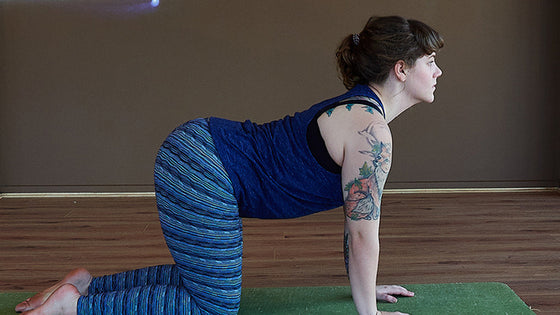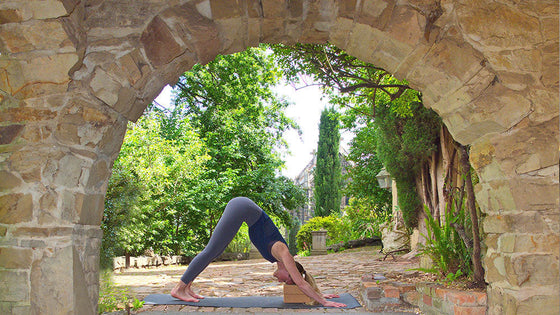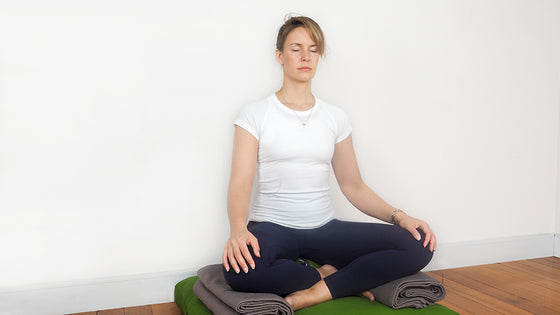- Ergonomic Products
- Ergonomic Furniture
- Yoga
- Meditation
- Pilates
- Air Treatment
- Blog
- Resources
- About Us
- Wholesale
- Ergonomic Products ▼
- Ergonomic Furniture ▼
- Yoga ▼
- Meditation ▼
- Pilates ▼
- Air Treatment ▼
- Blog
- Resources ▼
- About Us
- Wholesale
- Sign in
Compared to down-hill skiing, surfing or footy, you’d consider yoga as pretty risk-free, wouldn’t you? But the truth is, just like any physical activity, you can get hurt doing yoga. Here’s what you need to know to keep yourself safe, healthy and happy on the yoga mat:
1. Choose a qualified teacher
Any yoga teacher worth their weight in sandbags will take the safety and wellbeing of their students seriously. Quality, registered yoga teacher training programmes deliver practical knowledge of human anatomy, physiology and first-aid to equip teachers in training with the right safety skills. Choose a teacher who has studied yoga teaching adequately and keeps his or her skills current. In addition, a legit teacher will adhere to relevant legislative requirements relating to safety and care including Occupational Health and Safety and Duty of Care requirements.
Ideally, your teacher will reference relevant qualifications, experience and industry affiliations on their business website and/or marketing materials. If not, don’t be shy about enquiring about his/her background - you deserve to be in safe hands.
2. Use the right gear
Yoga doesn’t need a lot of fancy equipment, but there are a few basic essentials that must pass the safety test.Top of the list is a non-slip mat. Enough said about that - the name kinda gives it away, doesn’t it? Other key considerations are an uncluttered, even surface to hold you steady, with enough room around you to save bumping into fellow practitioners. When you practice in a studio, your teacher should take care of all this for you - but it doesn’t hurt for you to be mindful of your environment too.
3. Warm up well
When you fall in love with yoga asana you want to dive straight in, right? But resist the temptation to skip a descent warm up. Open your session with 5-10 minutes of gentle movement to heat and ready the muscles for more demanding poses. With the muscles warm and body systems prepped, you’ll be less likely to experience any owwies.
Pawamuktasana - a series of joint rotating exercises is ideal, as are a few gentle rounds of cat-cow to ease out any stiffness.
Safety plus - A solid warm up is extra-essential on chilly days, sedentary days or when you’re just getting back into exercise after illness.
4. Audio-visuals: Check 1-2
Can you hear and see your teacher clearly? Can she see and hear you clearly? Yes? Great! Listen carefully to verbal instructions and make certain you can see any demonstrations to ensure you’re in correct alignment. No? Position yourself so you and your teacher can see and hear each other well. You’ll get much more out of the class and minimise the risks of injury that can happen when you go it alone.
5. Make it a 2-way street
Open lines of communication between you and your teacher are essential for your wellbeing on the mat. Do you have any injuries (old or new) that she needs to know about? Any concerns about your physical abilities? Remember, your teacher can only recommend modifications for you ifs she knows what you need.
Safety plus - if you’re unsure when to return to yoga after illness or injury, chat with your teacher.
6. Honour your edge
Yoga encourages us to go within; to be present with all the sensations that arise, (even the unpleasant ones). But pain is a different matter. Pain is a signal that you’ve gone too far in a pose or come out of healthy alignment. To keep safe, honour your ‘edge’ - that delicious point in a pose where you’re slightly outside of your comfort zone - but not beyond it. This is where real growth and understanding of your yoga practice can take root. But push beyond the boundaries and you may find yourself in painful territory…
Safety plus: Embody Ahimsa; the philosophical yogic guideline that invites us to ‘do no harm’.
7. Breath as barometer
Your breath is oh-so revealing, offering an honest account of what’s unfolding on the mat. During asana practice, observe your breath closely. If it feels laboured, or you notice you are holding the breath, it could be a sign you’ve skated well past your ‘edge’ and into potential danger.A safe, fulfilling practice lies at the intersection of full, easy breathing and mindful movement. Get to know that place and let your practice blossom from there.
8. Reject comparison
Glossy magazines and social media feeds are ripe with images of lithe bodies arranged in pretzel-like shapes. These images can make certain poses appear easy, and tickle the ego into attempting a feat that’s perhaps not suitable for everyone.To keep safe, forgo forcing your body into a shape it’s not ready, and/or designed for. Accept where you are at in your practice and celebrate, rather than berate, what your amazing body is capable of. Remember, in an authentic yoga practice, function trumps form every time. When you embody safety and alignment cues, you are doing YOUR version of the pose, and that’s perfect.
9. Be present
Admit it, do you find yourself thinking about dinner around the 30-second mark of a long hold in your favourite forward bend?… (OK, maybe it’s just me…) Often times, injuries occur when attention goes walkabout.
The thing is, the mind loves to wander away from the task at hand, preferring to poke around in thoughts of the past and future. When we are not concentrating on the present moment, slip-ups can happen.
Be present. Focus your awareness on your breath, movement and thoughts as they unfold.
Safety plus: Practice self-compassion when you catch your mind wandering, then gently direct in back to the breath.
10. Be mat-fit
Yoga is inclusive, welcoming all body types, ages and levels of physical ability. In fact, Krishnamacharya famously said , 'If you can breathe, you can do yoga.’
However, if you have any concerns at all regarding your suitability for yoga practice, be sure to check in with your healthcare provider.
11. Care at home
Don’t get me wrong, there is definitely a place for home practice and online yoga classes. But if you choose to practice without the guidance of a teacher in a studio setting, proceed with caution.
Practice only the poses you are 100% confident in, and always consult a qualified teacher before including advanced poses in your solo endeavours.
Safety rules
From the outside, the physical practice of yoga may not seem as complicated or arduous as other popular physical pursuits. But it pays to play it safe on the mat as you can still get hurt.
Flavour your practice with honest intention, presence, and a compassionate attitude. That way, your yoga practice will be safe, enjoyable and injury-free.
Non-Slip Yoga Mat
The Earth Fusion Yoga Mat is a super grippy mat that is designed to last for many, many years. Made from the sustainable materials of rubber and jute it is also very friendly with our environment.
Yoga is generally safe for beginners when practiced with proper guidance, a qualified teacher, and attention to alignment and breath. Starting with beginner-friendly classes will help reduce injury risk.
The most common yoga injuries involve the lower back, shoulders, wrists, and knees. They often result from poor alignment, lack of warm-up, or pushing too far beyond one’s current ability.
To avoid injury, warm up properly, use a non-slip yoga mat, listen to your body, avoid comparison and practice under the guidance of a qualified teacher. Often a teacher will offer modified postures for those who may have some physical limitation.
Often you can, but it’s advisable to get medical clearance and inform your instructor about past or current injuries before class, then your teacher can advise any modifications that may be recommended.
The essentials are a non-slip yoga mat and enough space to move safely. Blocks, bolsters, or straps may also support alignment and can reduce strain.


